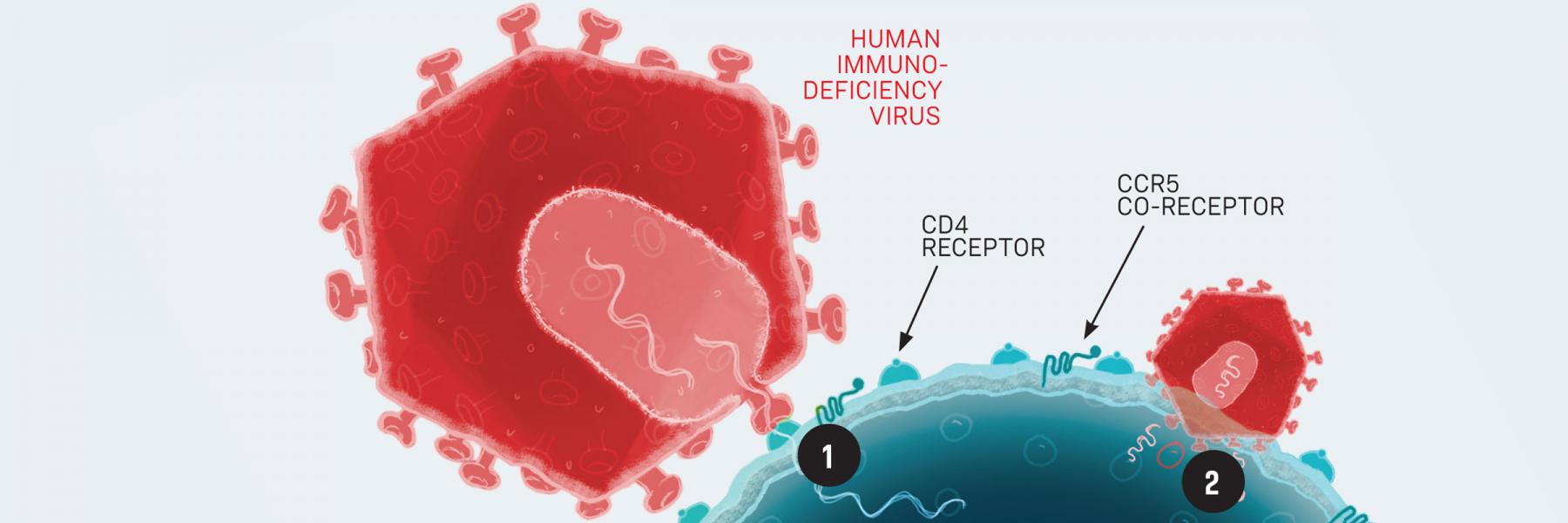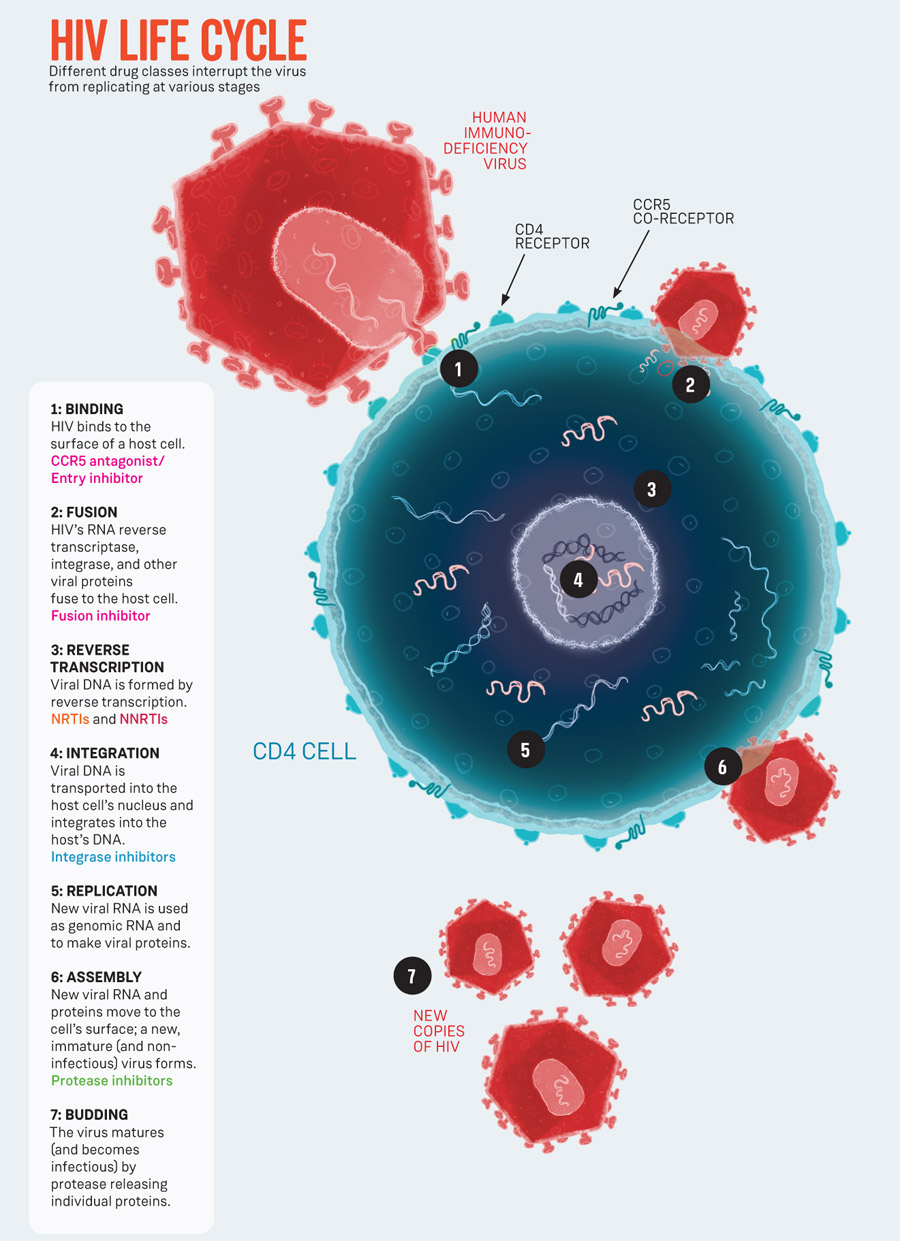Understanding HIV treatment doesn’t need to be difficult. Below are tips to help give you the knowledge you need to work with your providers to make empowered, informed choices about your treatment. Medications that are included in the 21st Annual HIV Drug Guide are the most commonly used drugs in the U.S. that are FDA approved.
There are several changes to this year’s HIV Drug Guide that will improve your experience and the way that you use this guide.
Drug order
When we started this guide 21 years ago, we listed drugs in the order they were approved. There have been several variations since then in how drugs have been listed in the guide as new treatments and new classes of drugs became available. Today, with so many good options out there, we highlight those drugs that are the best options and list them first, followed by commonly prescribed drugs in the five drug classes in alphabetical order. To quickly find your drug, go to page 24. Older drugs that are no longer used or infrequently prescribed are available only online at positivelyaware.com, and the pages for these rarely used drugs are no longer being updated. This includes some of the oldest HIV drugs that either have intolerable side effects or for which there are better options now available.
Recommendations for use
The Department of Health and Human Services (DHHS) and the International AIDS Society-USA (IAS-USA) both publish recommendations for the use of HIV antiretroviral drugs. These recommendations focus on drug regimens more than single medications, but are essential tools that help providers and individuals choose a regimen that’s best suited for them. We include information on some of these recommendations on page 14, and at the top of each drug page, as well as the pullout drug chart. DHHS and IAS-USA guidelines are very similar in their recommendations, so for consistency we reference only the DHHS guidelines. For the entire list of recommendations go to aidsinfo.nih.govorias-usa.org/guidelines.
Drug classes and co-formulations
A fixed-dose combination (FDC) combines two or more drugs in one tablet, such as Prezcobix (darunavir/cobicistat). A single-tablet regimen (STR) contains drugs from different classes and is a complete regimen in one pill, such as Triumeq (dolutegravir/lamivudine/abacavir). Atripla, Complera, Genvoya, Odefsey, Stribild, and Triumeq are the six single-tablet regimens that are currently available.
When a drug is a co-formulation (combination) of different drugs, the generic names will be separated by slashes—for example, Genvoya is the co-formulation of elvitegravir/cobicistat/emtricitabine/TAF.
Remember that anti-HIV drugs should always be taken in combination using two or more drug classes (for example, an integrase inhibitor plus two non-nukes). While they are not a drug class, single-tablet regimens (STRs) are in their own category. STRs are widely used for first-time treatment and for their convenience, but they are not for everybody. Those who are treatment-experienced or have multi-drug resistance, may not be able to use these STRs and will still have to combine two to three or more single agents from different drug classes, the old-fashioned way.
There are also several non-HIV drugs that are commonly used by people with HIV, which are included in this guide. In addition, there is a Truvada for PrEP (pre-exposure prophylaxis, for prevention) page in this issue.
Drug names
When a drug is in development and before it’s approved, it’s first given a “ generic” name (such as dolutegravir), which health care providers may identify it with even after approval. Once it is approved, it’s given its brand name (Tivicay is the brand name of dolutegravir), which most people know it by. At medical conferences and in publications you will often see three-character abbreviation used (DTG in the case of dolutegravir). A good rule of thumb is, brand names are capitalized and generic names are lower case. Within each drug’s page, you will see the drug referred to by any or all of its names. All of each drug’s names appear at the top of its page and also on the pullout drug chart, so if you’re confused, look them up there!
Drug price and access
The Average Wholesale Price (AWP) is a way to compare costs of drugs. It is not necessarily what you would pay if you had to pay the full retail price. HIV drugs are not cheap, and figuring out how to pay for them can be a challenge. Luckily, there are programs that can help cover all or part of the costs of these medications. Of course many of us take drugs for conditions other than HIV, so in our drug co-pay and patient assistance program chart (see page 63) we include information on drugs used to treat HIV as well as several other non-HIV drugs commonly used in people with HIV.
Navigating your treatment
There is a wealth of information available about HIV and the drugs used to treat it. Knowing where to look and understanding some of the basics will help you sort through it all, giving you peace of mind and the knowledge you need to live a better, healthier life with HIV.



